*This post may have affiliate links, which means I may receive commissions if you choose to purchase through links I provide (at no extra cost to you). As an Amazon Associate, I earn from qualifying purchases. Please read my disclaimer for additional details.
Besides ruining the visual appeal of your window, the appearance of rot on your window frames is a sign of structural weakness. In other words, if your window frames show any sign of rot, it won’t be long before they fall apart.
If you recently noticed signs of rot on your window frames, one of the many things you need to know is the reason for the rot.
Window frames fall apart for various reasons. While you might be able to control some of them, others are largely beyond your control.
In this article, we discuss six reasons why your window frames are rotting. We also talk about the signs that show your window frames are rotting and ways to fix window frame rot.
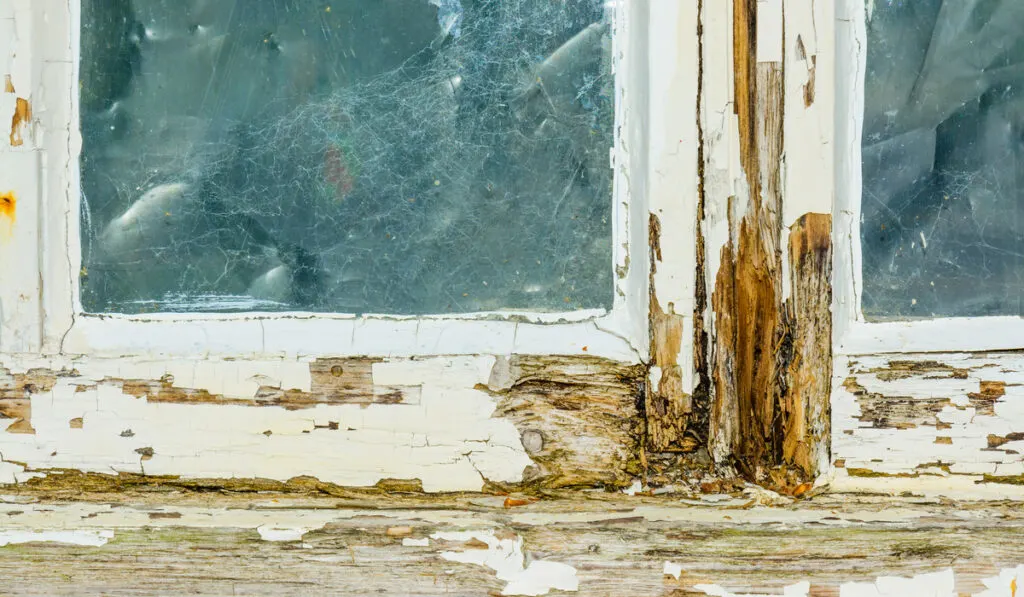
Table of Contents
6 Reasons Why Your Window Frames Are Rotting
Moisture
Moisture is the most common reason why window frames rot. Now, moisture does not cause rot directly. Instead, it promotes fungal growth. Fungi (mold and mildew) are the actual cause of rot on your window frames.
The moment you notice rot on your window frames, the first thing you should check for is dampness. More often than not, window frames that are rotting will be unusually damp.
Your window frames can be unusually damp for various reasons. One such reason is uncontrolled exposure to the elements. If your window frames are in a spot where they receive maximum snow and rain, they are highly likely to become damp.
Another cause of dampness in window frames is air conditioning systems. If your air conditioner is directly above your window, your window frames might get damp readily.
If you do not paint your window frames routinely, water might seep in at some point. This can also cause dampness, which will lead to rot.
Your window frames may also be damp if the wood used in making them was not dried correctly before use.
Generally, the water content in wooden window frames should be less than 17%. Some experts say a moisture content of 9% to 14% is optimal. Anything above 20% will promote rapid fungal growth, leading to rot. And anything above 17% will gradually cause the paint on the frames to peel off.
When checking your window frame for dampness, you can try assessing the moisture level with your hands. However, if you cannot tell through touch, you could try using a wood moisture meter.
With a wood moisture meter, you can tell the moisture content of your window frames with a high degree of accuracy.
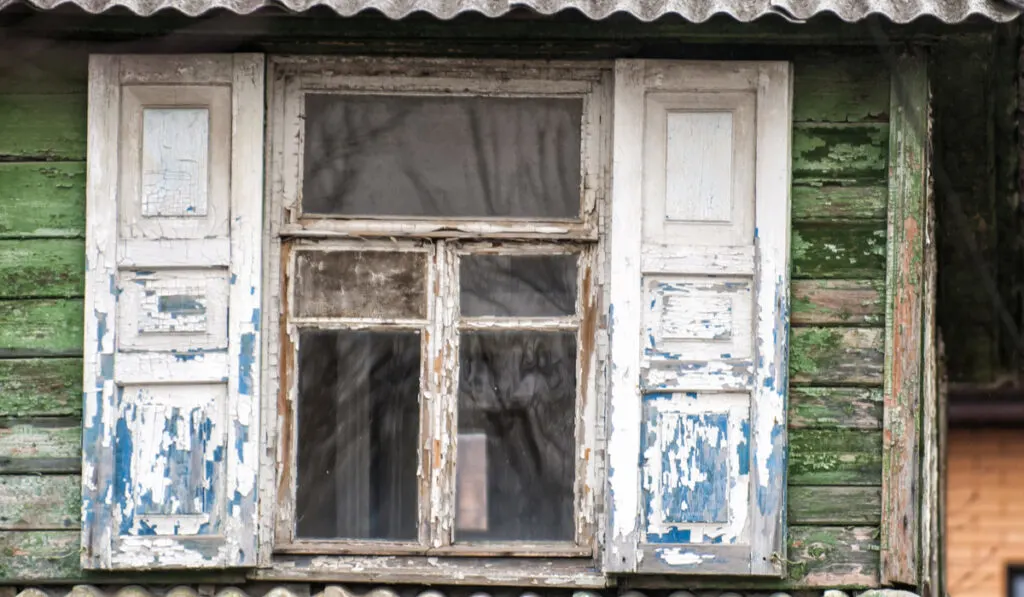
Insufficient Ventilation and Elevated Humidity
Like moisture, insufficient ventilation does not directly cause rot in window frames. Instead, insufficient ventilation raises the humidity in your home.
Elevated humidity in your home equals increased moisture levels. Of course, with more moisture around them, your window frames will absorb more water and become damp.
As said earlier, fungi grow better in damp wood. So, as your window frames become damp, fungi will grow in them, causing rot.
Summarily, if the space around your window frames is not well-ventilated or if your home is humid, your window frames may become damp. When they become moist, mold and mildew will grow in them, causing rot.
Aging
One of the primary reasons why your window frames are rotting is age. No matter how well-treated the wood used for your window frames is, it will eventually rot. Of course, routine maintenance can delay the rot, but it will happen.
Window frames in newer homes are unlikely to rot because of age. However, those in older homes (over 10 to 20 years) are likely to yield to the effects of age.
Of course, some window frames last longer than 20 years. Some can even stay in top shape for around 40 to 60 years. It all boils down to the type of wood, the wood treatment, and maintenance.
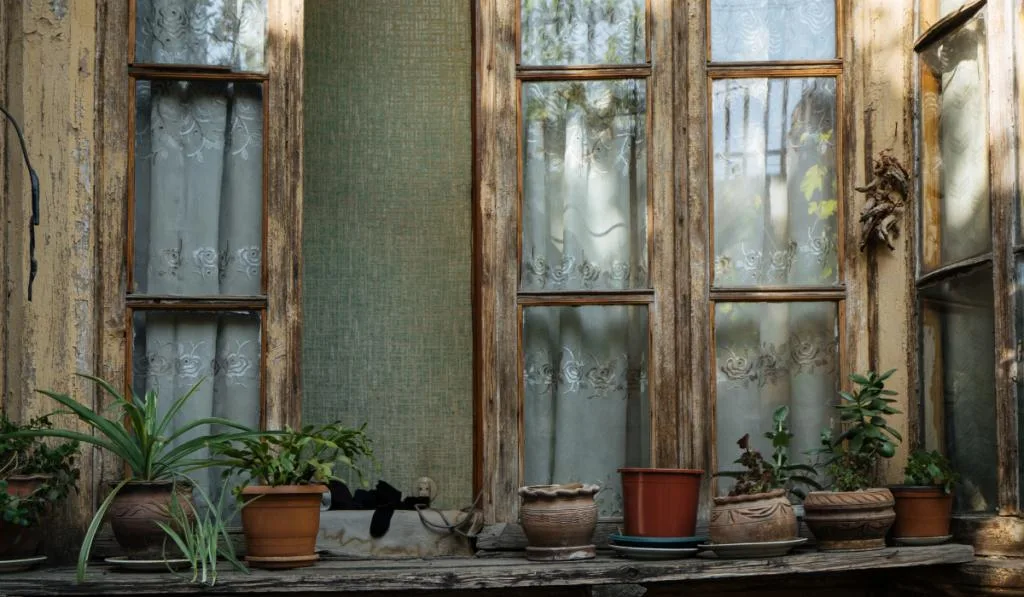
The Wood Was Not Well-Treated
Before use, the wood undergoes various processes, including drying and preservation. Wood drying reduces the moisture content of wood, making it more compact, lighter, and less prone to degradation.
After drying, the wood undergoes various treatment processes. The processes include biocide treatment with fungicide, insecticide, and pesticide. Depending on what you want to use the wood for, the treatment process may also include waterproofing the wood.
Treating the wood with biocides prevents the growth of fungi, termites, insects, and pests that can destroy the wood. Whereas waterproofing keeps the wood from absorbing water while in use.
As you can imagine, if any of the processes we highlighted above were not done correctly, the wood would be prone to rot. Of course, if you use such improperly treated wood for window frames, the frames may rot in no time.
Poor Maintenance
Irregular or poor maintenance is another possible reason your window frames are rotting.
With time, the caulking around your window frames will fall out, the paint or stain may peel, or dust may accumulate. Unfortunately, said factors will promote wood rot if not treated early.
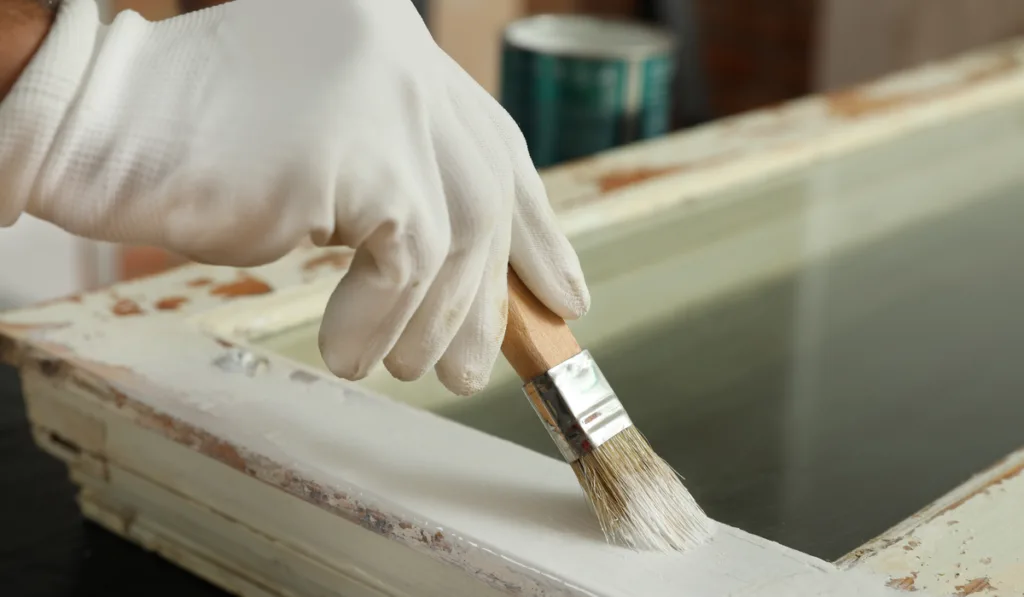
Without caulking, water can seep into the spaces around your window frames. Of course, if this happens, some of the moisture will go into the window frames to promote fungal growth and cause rot.
When paint peels off your window frames, they lose one of the barriers that keep them from absorbing moisture. As a result, they will become damp, and fungi will grow on them and cause rot.
With routine maintenance, you are more likely to notice the changes in your window frames early. Of course, if you see them in time, you can treat them before the damage becomes extensive.
But if you barely ever care for your window frames or your maintenance routine is insufficient, those changes will cause real damage right under your nose.
Design
In some cases, the holes you see in your window frames are actually part of the design, not a sign of damage. Some window frames come with clear-cut openings at their bottom border called weep holes.
Weep holes are added to window frames to remove water from the window sills.
So, if the holes in your window frames look precise – like a manufacturer’s design – they are most likely weep holes.
However, if you are sure that the window frames had no weep holes when you bought them, those holes may be a sign of rot.
5 Signs Your Window Frames Are Rotting
When your window frames are rotting, you may notice any of the following signs.
Discoloration
As water seeps into your window frames and fungi grow, you may notice a color change. The frames may become blackish, yellowish, greenish, or brownish.
Now, discoloration does not always mean that window frames are rotting. However, more times than not, discoloration is a sign of rotting.
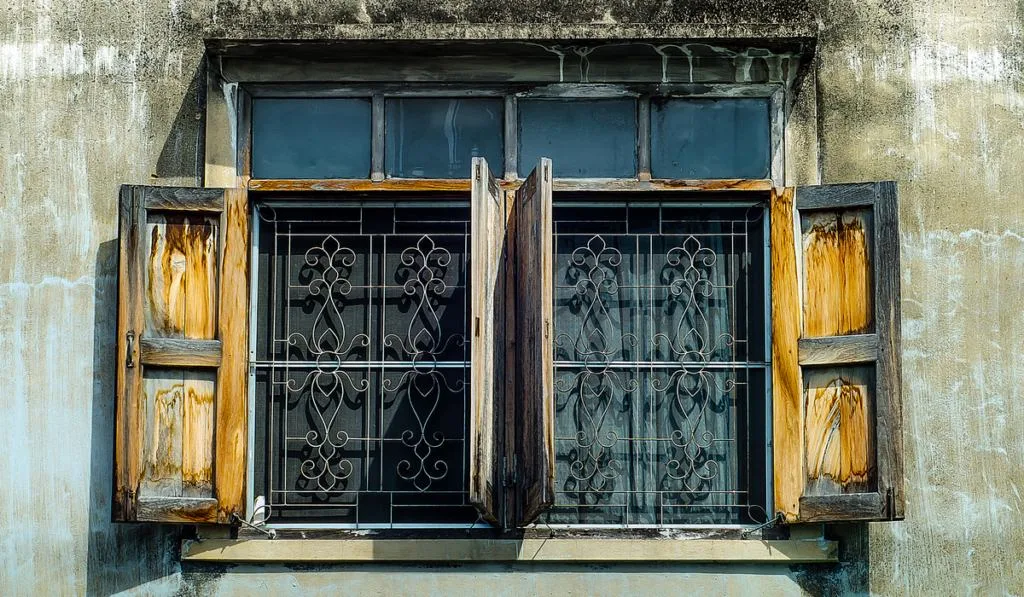
Paint Is Peeling, Swelling, or Cracking
Another sign of rot in window frames shows up in the paint. The paint on rotting window frames may peel, crack, or swell.
Peeling or cracking paint is typically a sign of a water leak. On the other hand, swelling paint shows that you painted the frame when it was damp.
These paint malformations are not definitive signs that your window frames are rotting. However, when you see them, the likelihood of rot is very high.
The Window Frames Are Soft
If your window frames are soft or punkier than they should be, your window frames are rotting. This is a definitive sign of rot.
Window frames should not be soft. They should also not feel brittle, nor should they crumble when you touch them. If you notice any of these signs, your window frames are, without a doubt, rotting.
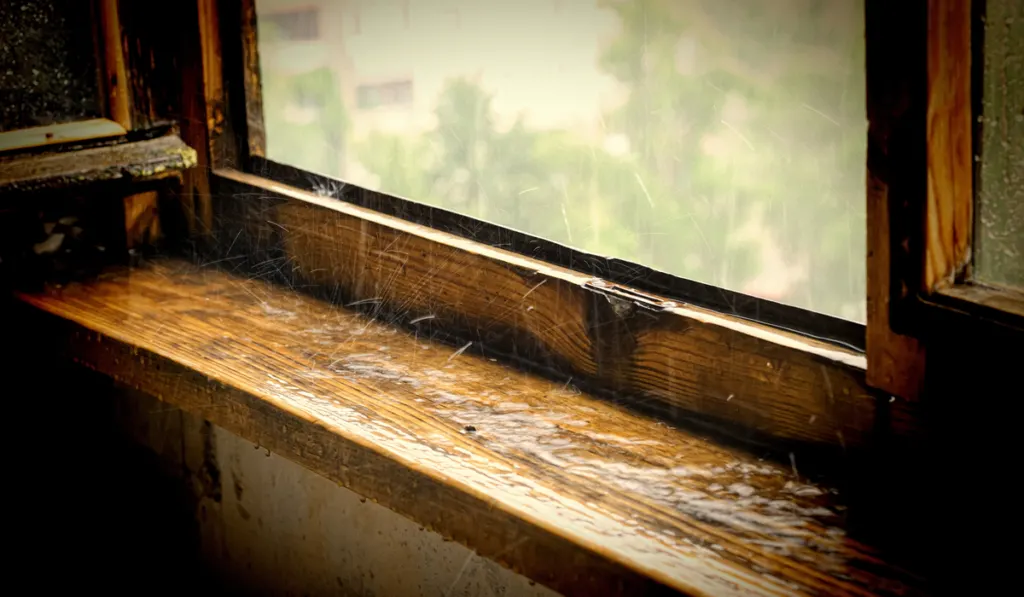
Water Retention in the Window Sill
The window sill is one of the first parts of a window that rots. When window sills rot, they retain water longer than usual. So, if you notice increased water retention in your window sill, your window frames may be rotting.
Besides water retention, you may notice signs of damage on a rotting window sill.
Structural Damage Around the Windows
Less commonly, window frames may not readily show signs of rot. They may look solid. But then the other structures around them, such as the walls, will show signs of damage.
If you notice that the wall connected to your window frames is inexplicably damp, there might be a water leak. Of course, a water leak to the wall will surely affect the window frames. So, suspecting or looking out for rot in the wall is not a bad idea.
How to Repair Rotting Window Frames
Treat the Wood
One way to repair rotting window frames is to treat the wood. You’d have no luck treating wood that is badly damaged. But you can save wood that isn’t.
Wood treatment involves applying fungicide to kill mold and mildew. But beyond that, you may waterproof the wood by sealing it with paint or varnish.
Cladding
Another way to fix rotting window frames is cladding. Cladding involves replacing badly damaged wood with new pieces of wood, then covering the sill and wood-brick frame with aluminum cladding. The cladding provides a barrier against water ingress.
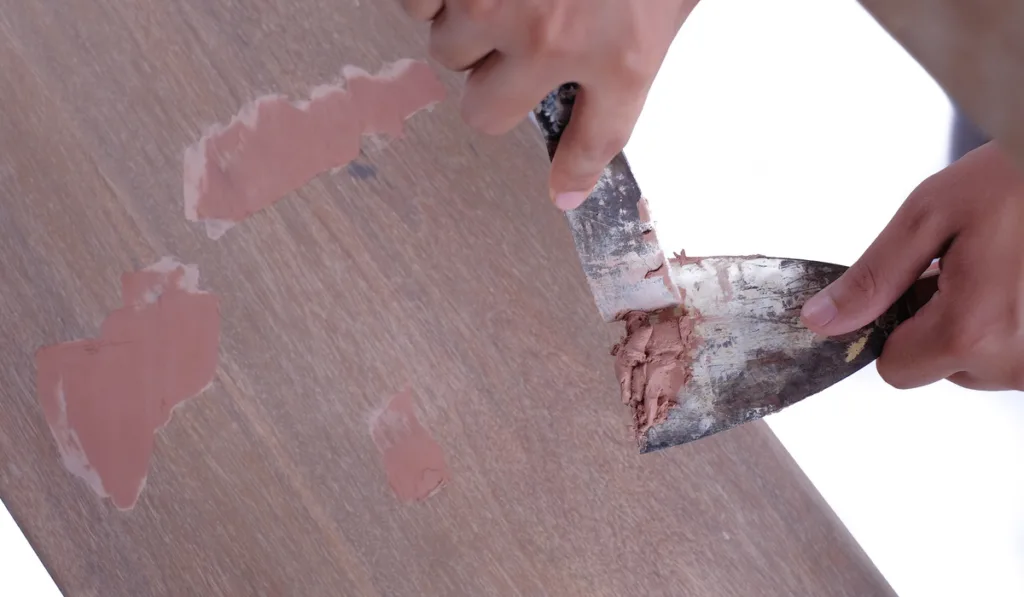
Use Wood Fillers
You might be able to salvage some of the rotting wood with epoxy wood fillers.
Epoxy wood fillers have two components. The first component is thin. On applying it, it travels into the spaces created by rot in the wood. Then it fills those spaces, kills fungi, and binds the remaining structure of the wood together.
The second component, which is relatively thicker, fills the other gaps in the wood.
Replace the Window Frames
Instead of salvaging the rotting window frames, you could replace them. The benefit of this option is that you do not have to worry about the window frames rotting later on. Of course, when you change the window frames, take the opportunity to do more to ensure that they do not rot a second time.
If you are unsure of wooden window frames, you may opt for PVC or aluminum window frames. With these two, you do not have to worry about rot.
Resources
- https://www.buildwithrise.com/stories/how-to-care-for-wood-window-frames
- https://salopglass.co.uk/knowledge-advice/how-long-timber-windows-last/
- https://www.a1everlast.com/wooden-window-frames-life-expectancy/
- https://www.rbamontana.com/windows/3-major-causes-of-premature-rotting-in-window-frames/
- https://chameleon-decorators.co.uk/rotten-wooden-window-frames/
- https://www.buildwithrise.com/stories/how-to-care-for-wood-window-frames
- https://www.progressiveiw.com/6-signs-your-window-frames-are-rotting-and-its-time-for-new-windows/
